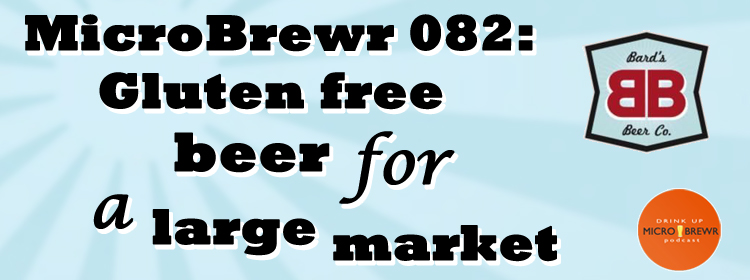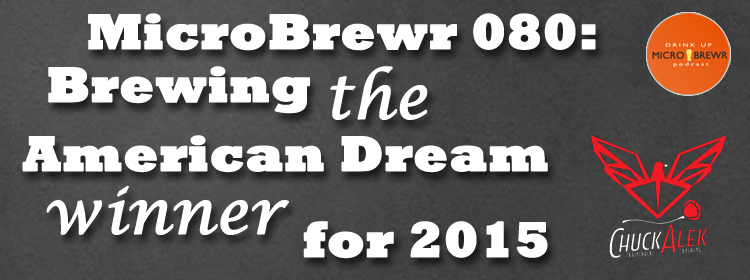MicroBrewr 083: Market branding for a cider company
Podcast: Play in new window | Download | Embed
Subscribe: RSS
Fran Toves’ son challenged her to enter cider into the homebrew competition. After her 3 entries made it to the top 10, she figured it time to take the product to market and started Common Cider Company in Drytown, California.
“There is no need to start a cider company with a million dollars.” [Tweet This]
Cider is not brewed the way beer is made, but similar fermentation tanks and bright tanks are used for making cider as making beer. After the initial attention at the homebrew competition, Common Cider Company started with a 400-gallon (13-BBL) test batch that got picked up by a distributor. They grew to 30,000-gallon (1,000-BBL) batches within a couple years.
Whereas a cidery or a cider house presses the fruit themselves to make juice, a cider company buys the juice pre-squeezed. A cider usually has a base of apple juice, but it can start with other fruits. A perry is made from pear juice.
“Cider as a base,” says Fran, “is a great platform to be able to introduce new flavors.”
Fran’s background in product development for the organic food industry is helping her with Common Cider Company. She emphasizes the importance of branding.
Fran says a small company can easily spend $50,000 to $100,000 on high-quality branding design for all promotional materials. With such a significant investment, it is very important to consider your message and what your company is about. If you want to take more time to learn about your customers and find your voice in the market place, just get simple logo at first. Then budget up to $100,000 for a re-branding.
That’s the route Fran planned for Common Cider Company. “I wanted to spend some time with our customers an just spend some time in the marketplace,” she says. “before investing in the brand.”
Sample Cider Packaging
They’re keeping a logo element from the original design scheme and hiring a branding firm to re-design their message. The results have been spectacular and you can expect to see more on store shelves soon!
Fran also has tips for the today’s listener question about budgeting and profit projections:
- Decide where you are and where you want to be.
- Put a budget for every core area including, branding, legal fees, sales staff, materials, and all other details.
- Decide what you can spend on each category of your budget.
- Use checklists so you don’t miss details.
“Your suppliers will give you pretty good information as far as what your cost of juice is and your yeast and any other adjuncts that you want to add to your product,” Fran suggests. “And that goes from your raw material to your packaging.”
As for projecting profits, Fran always advises starting with small batches. She suggests 500-gallon batches or 1,000-gallon batches at the most. Any larger, and you’ll have too much money tied up in product and it will take too long to sell.
After you sell a few batches to earn some money and build demand, then you start doing larger batches.
“It’s important to start small,” Fran advises. “Just like any business, you’ve gotta kind of walk before you can run.”
Listener question:
From Texas Rüegg: Where do you find real accurate numbers to estimate cost of operation? I keep building spreadsheets with hundreds of calculations, but at best they are just guesses. I want to be conservative with my numbers and be sure that even the worst case will actually make money. So where do you find real data?
Can’t-go-without tool:
Pump.
Book recommendation:
- The Checklist Manifesto: How to Get Things Right by Atul Gawande.
Check out the entire list of recommended books, click here.
An upcoming beer style:
Dry ciders
Other resources:
- Friends of Black Rock High Rock, dedicated to the health, diversity and productivity of the Black Rock and High Rock regions.
- BrandLab; branding, identity, video, content, the big idea.
- Hard Cider Is Having A Moment, Jonah Keri, FiveThirtyEight, January 9, 2015.
You can reach Fran Toves and Common Cider Company at:
- www.commoncider.com
- Facebook: CommonCider
- Twitter: commonlovecharm
- Instagram: commoncider
- Untappd: CommonCiderCompany
Sponsors:
Download a free audiobook.
Support MicroBrewr
Help keep MicroBrewr on the air. CLICK HERE for ways you can help.














